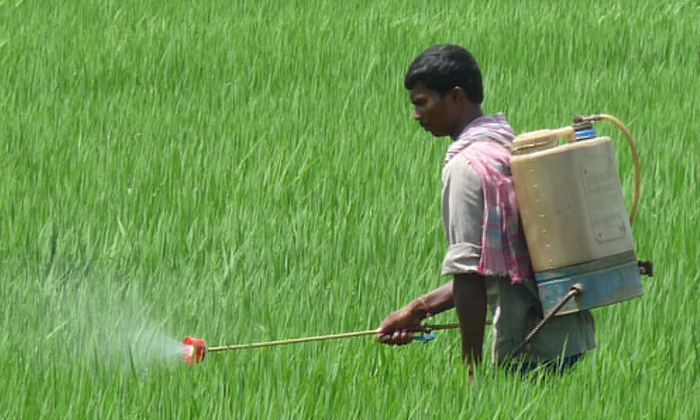The logic is simple: A claim has to be backed by independently-produced research papers and reports for it to be considered serious. The holy grail of journalism, after all, has the rules clearly spelt out: do not accept a claim without proof.
And so, I scan whatever I can—books, sites, pages, archives—for that one authoritative report that will link cancer to the use of chemical fertilisers and pesticides.
It is 2008. I am doing some background research for our diploma film on the not-so-green revolution in Punjab. We leave for the shoot in a couple of days, and I have not found a single study that establishes the link—not a single study that can help separate wheat from chaff. Fact from Fiction.
In Punjab, I hear accounts of farmers and peasants; accounts that claim that a certain kind of skin disease, a certain repetitive incidence of cancer was not known in the village even thirty years ago. The farmers blame it all on the chemical in agriculture. The elderly talk about not needing to spend a bulk of their income (however small it may have been) on medical expenses earlier. ‘Diseases are everywhere now,’ they say, holding the chemical pesticides and fertilisers squarely responsible.
But didn’t these help them increase yields, and earn more money, I ask them. ‘Yes, for a few years. But for what? At what cost?’ they ask.
These are villages where Kheti Virasat Mission, a non-governmental organisation, has been trying to promote chemical-free agriculture. I take the farmers’ accounts (influenced by this NGO, their opinion might be a manufactured narrative!) therefore, with liberal doses of salt.
But the story repeats itself across villages of Punjab. Fabulous increase in yields on adopting green revolution, but within 6-7 years, a sharp drop—to levels close to pre-green-revolution figures. And a consistent drop in yields every year thereafter. Increasing input costs further squeezing decreasing returns. And disease. Cancer.
And yet, no scientific study. No research papers?
Seems odd. Very odd.
Under a star-lit open air bedroom in the Kheti Virasat Mission office in Jaitu, I ask Umdendra Dutt, the man behind the initiative: why are there no studies? How is it possible to believe these claims without scientific evidence?
The absence of ‘research’ does not discredit people’s experience, he says. What are farmers you meet telling you? What is the absence of earthworms in the soil telling you, he asks.
I do not understand.
I do not recognise lived experience as scientific evidence. Not yet.
So I circle the penumbral zone between realities and constructions.
“I did not know how money flows worked, so I did not understand what Umendra Dutt had said: that the absence of ‘research’ does not discredit people’s experience. I did not acknowledge people’s experience as scientific evidence then.”
A few days into the shoot, a self-proclaimed organic expert and doctor announces himself on location. Jagraon is a small place, and word has travelled that some students are making a film on not-so-green agriculture. He has come armed therefore with what he says are remedies for the wretched earth. His packaged dabbas of vermi-compost and other assortments will replenish the soil to make it sujalam sufalam again, he claims.
He insists on displaying his ware on a table in front of the camera, and sits behind the table to talk about his magic solutions. Ten minutes on, we turn off the camera without his knowledge. He goes on for another hour, unprompted, and then asks us if he should say anything else. Having seen through what was obviously a shameless marketing pitch, we say no.
But the farmer whose house we are staying in seems to warm up to him. He talks about using the expert doctor’s products next year on a small patch of land. The doctor in turn promises huge remuneration for his produce on the international market, to which he claims he has access.
And so perhaps, the ‘Organic’ (with the capital O) journey starts for this farmer. Perhaps, this is how ‘Organic’ journeys begin: the ‘Organic’ that is certified by organisations in Europe.
The ‘Organic’ whose produce is far more expensive than the chemically-poisoned stuff.
And the ‘Organic’ that the Hindustan Times was referring to in its editorial when it said ‘In these trying times, when buying ordinary food stuff can burn a hole in our pockets, comes the news that can actually help us save some hard cash when we go out to shop the next time.’ HT was referring to a study by a Stanford University group which states that organic foods are no more safe or nutritious than conventional foods.
The Stanford study pokes holes in the widely held belief says organic=healthy. My mind goes back to conversations in Punjab during the filming as I read about this study. Conversations that claimed that organic was indeed healthy. Conversations where farmers said that though they grew chemical pesticide and fertiliser-imbued stuff for the market, they grew pesticide-free organic food for their families. Because the latter was tastier, more nutritious.
But why poisoned stuff for the market, I had asked. Because they were wary of shifting entirely to chemical-free agriculture. Umendra Dutt had then explained that years of chemical spraying had killed essential micro-organisms in the soil, and it would take at least five years for the spoil to regain some of its fertility. Till then, yields under the organic way would be quite low.
So it was organic for the family, and poison for the market. It was organic=healthy; conventional=unhealthy. We captured that narrative on camera.
Now, a study by no less than Stanford is saying the exact opposite!
The journalists’ Holy Grail: claim—backed by proof!
But I don’t look for scientific proofs any longer. Because I know that science is contingent. That scientific knowledge is not produced outside the economic power structures. That the powers-that-be will never likely produce knowledge that betrays their interests.
So now, I question the evidence presented before me. I probe, and find that the Stanford study is funded by corporate agriculture and biotechnology giants.
The powers-that-be are clever enough not to fund the study directly. Agribusiness giants like Cargill and foundations like the Bill and Melinda Gates Foundation, which have deep ties to agricultural chemical and biotechnology corporations like Monsanto, instead donate millions to the institute to which the scientists who conducted the study are attached. Then, the study is presented as independent research of the Stanford University’s Freeman Spogli Institute.
The dependence on global agribiz money for framing the contours of the study, conducting research and writing a report which servers the funders is washed away: the study is labelled ‘independent’.
I did not know this then, in 2008.
I did not know how money flows worked, so I did not understand what Umendra Dutt had said: that the absence of ‘research’ does not discredit people’s experience.
I did not acknowledge people’s experience as scientific evidence then.
I only acknowledged scientific studies, like the one by Stanford.
Today, when the money flow is a little clearer, I know that the Organic that the Stanford study is talking about, the Organic that the expert doctor was selling to the farmer in Jagraon is also a creation of the global market.
It is not same as the organic being grown by farmers working with the Kheti Virasat Mission in Punjab. Or the organic of the non-pesticidal management programme of Andhra Pradesh. Or the organic spoken of by the Deccan Development Society, the Centre for Sustainable Agriculture, and countless other organisations.
Stanford’s Organic, that expert doctor’s Organic, is a creature of global capitalism: like the conventional crop, it is also heavily dependent on externally-procured inputs, and is equally capital-intensive.
The other organic humbler. It tries to make do with inputs available naturally. The onus is on zero input costs.
As I read the Stanford study and see through the holes, I realise how powerful the gloss of scientific language is.
How it converts fictive accounts into real facts.
And gets rid of the penumbral zones to produce black truths and white lies.


